Key takeaways:
- Understanding various types of music licenses is crucial for artists to navigate their rights and maximize opportunities.
- Proactive licensing is essential for independent labels to protect their catalog and enhance revenue potential.
- Technology, including blockchain and AI, is transforming music licensing by increasing transparency and efficiency.
- Independent labels face challenges like funding limitations and competition with major labels, which complicate their ability to thrive in the market.

Understanding Licensing in Music
Licensing in music is a critical aspect that often goes unnoticed by those outside the industry. When I first dove into this world, I was surprised to learn how many types of licenses exist, each serving a unique purpose—whether it’s for performance, mechanical reproduction, or synchronization. Understanding these distinctions can be a game-changer for artists trying to navigate their rights and opportunities.
One moment that truly opened my eyes was when I witnessed an indie artist struggle to secure a sync license for a TV show. They had created an incredible track, but because they hadn’t secured the necessary rights, that beautiful music went unheard on a platform it could have reached thousands. This experience made me question how many other talented musicians might be in the dark about the importance of these licenses—imagine all that potential going unrealized!
It’s essential to grasp that licensing isn’t just a formality; it safeguards creators. I remember talking to a friend who’s a songwriter; she expressed feeling overwhelmed when reading through license agreements. Yet, she also realized that having a reputable attorney guide her through the process was empowering. Isn’t it interesting how understanding the legal landscape can transform our approach to creativity? Ultimately, embracing licensing can open doors to opportunities that help artists flourish and be recognized for their work.

Importance of Licensing for Labels
Securing the right licenses is vital for independent record labels, as it not only protects their catalog but also maximizes revenue potential. I recall a time when a label I consulted for had neglected to obtain proper licenses for a compilation album. As a result, they faced hefty penalties and lost valuable distribution opportunities. This experience underscored for me how proactive licensing is essential in a competitive industry.
Every time a song is played or used in a film, it can generate income, making licensing a crucial part of financial strategy. I once met an artist whose track had been featured in a popular commercial, earning them life-changing royalties. They stressed how obtaining synchronization licenses beforehand was a game-changer, allowing their work to be showcased to a broader audience while reaping the financial benefits. Isn’t it fascinating how a simple piece of paper can open floodgates to both exposure and income?
Moreover, licensing fosters trust between artists and labels, which is invaluable in an industry that’s built on relationships. I remember chatting with a producer who emphasized that having clear licensing agreements established a sense of professionalism and respect. This not only nurtured better collaborations but also encouraged other artists to bring their work to the label. How often do we see that trust translate into creative synergy, resulting in groundbreaking music?
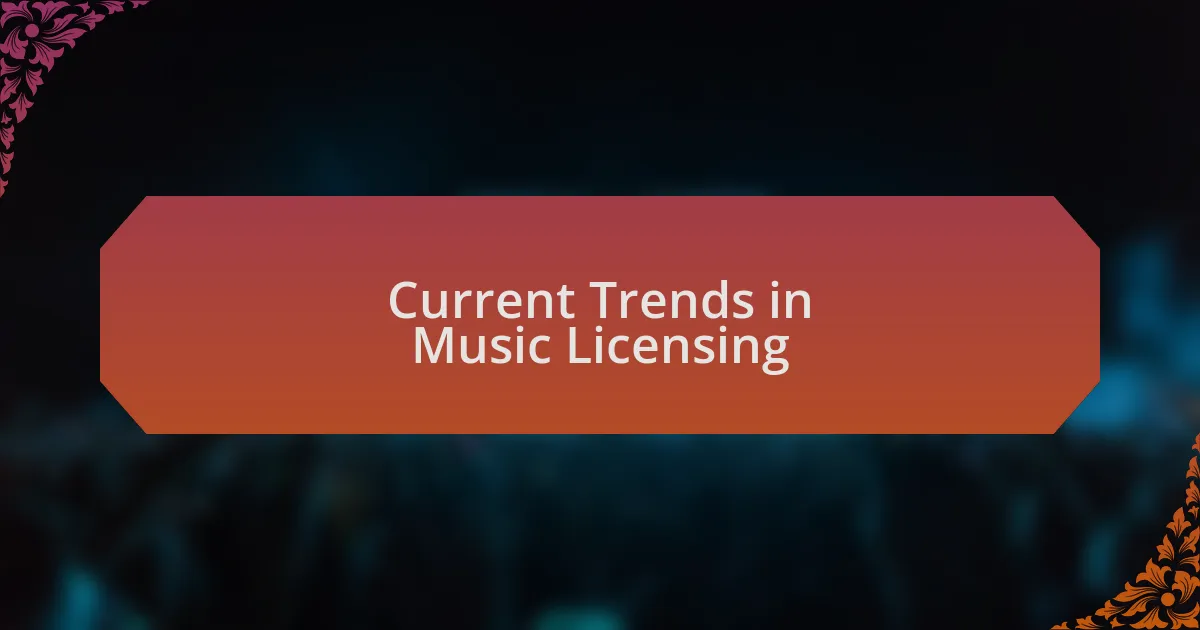
Current Trends in Music Licensing
In recent years, the growth of streaming platforms has significantly influenced music licensing trends. I recall a conversation with a licensing professional who mentioned how rapidly evolving demands require labels to adapt their strategies. Now, securing licenses for services like Spotify and Apple Music is just as crucial as traditional radio airplay. Isn’t it intriguing how digital distribution continues to reshape the landscape of revenue opportunities?
One trend I’ve noticed is the increasing importance of licensing in the realm of user-generated content. Platforms like TikTok have created a new ecosystem where independent artists share their music while adhering to licensing requirements. I remember advising a small label on how to navigate these waters; they saw a remarkable boost in fan engagement when they carefully licensed their tracks for TikTok use. Can it be that the right licensing strategy can propel even unsigned artists into viral fame?
Additionally, there’s a growing movement towards transparency in licensing agreements. I spoke with an artist manager who expressed the frustration of vague contracts that often leave artists in the dark about their rights. This push for clarity reflects a collective desire for fairness and equality in the industry. How empowering would it be for independent labels to lead the way in creating straightforward, artist-friendly agreements?
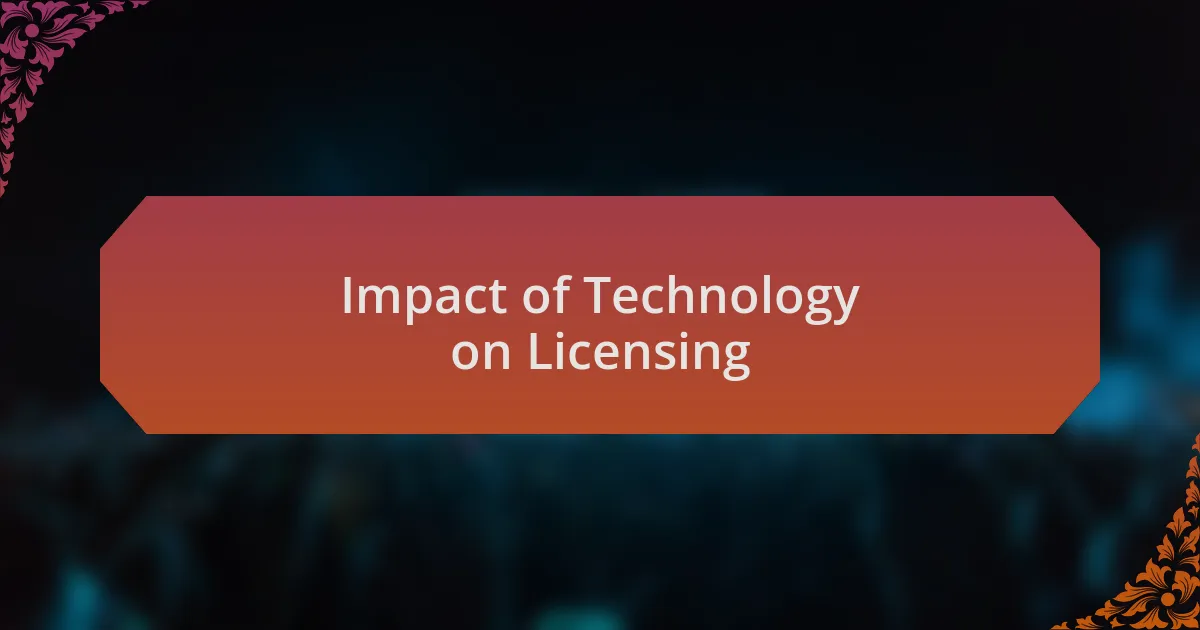
Impact of Technology on Licensing
The rapid advancement of technology has fundamentally altered the landscape of music licensing. I remember attending a conference where experts discussed how blockchain technology could provide a transparent and efficient way to track licensing agreements. Isn’t it fascinating to think that this could eliminate disputes over royalties and ensure that artists get paid promptly?
Moreover, artificial intelligence has started to play a pivotal role in simplifying the licensing process. I once worked with a tech startup that developed an AI-driven platform to automate rights clearance, and I saw firsthand how it reduced the time and resources needed for licensing. This kind of innovation allows independent labels to focus more on creativity rather than getting bogged down in paperwork.
Cloud-based solutions have also made it easier for labels and artists to collaborate globally, forging partnerships that were less feasible before. I fondly recall a project where a label worked with an artist overseas, and thanks to cloud technology, they streamlined the licensing process in just a few days. Isn’t it inspiring how technology removes geographical barriers, allowing for a truly global music community?
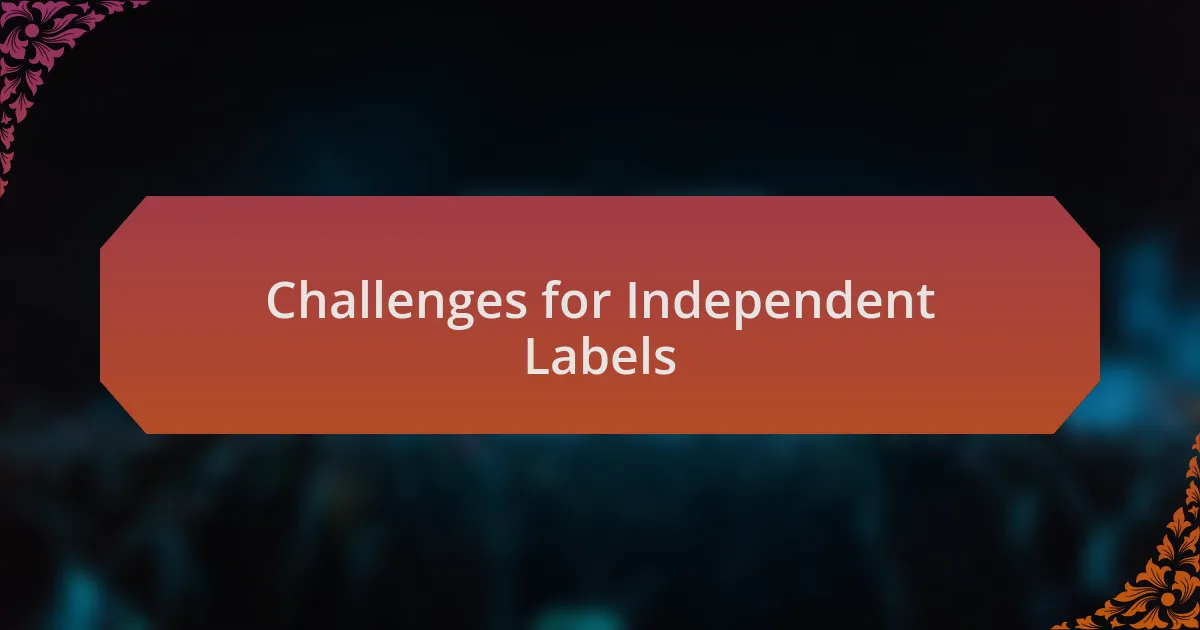
Challenges for Independent Labels
Navigating the challenges of funding is an ever-present hurdle for independent labels. I once sat down with a small label owner who passionately recounted their struggle to secure enough capital to promote a groundbreaking artist. It’s disheartening to see talent go unnoticed simply because the budget isn’t there to back it up. How can we expect unique voices to shine if financial constraints hold them back?
Another significant challenge is the fierce competition from major labels and streaming platforms. In my experience, independent artists often feel overshadowed by the marketing clout of industry giants. I recall attending a local gigs where amazing indie acts performed, yet many of them lacked the visibility they deserved. Why is it that artistic merit sometimes takes a backseat to promotional dollars?
Finally, the sheer complexity of music licensing can be overwhelming. I remember helping a friend navigate the licensing maze for their album, and the effort was exhausting. If independent labels struggle to understand the intricacies of licensing, how can they thrive in a market that demands both creativity and legal savvy? The barriers can feel insurmountable, but overcoming them is essential for the survival of independent music.
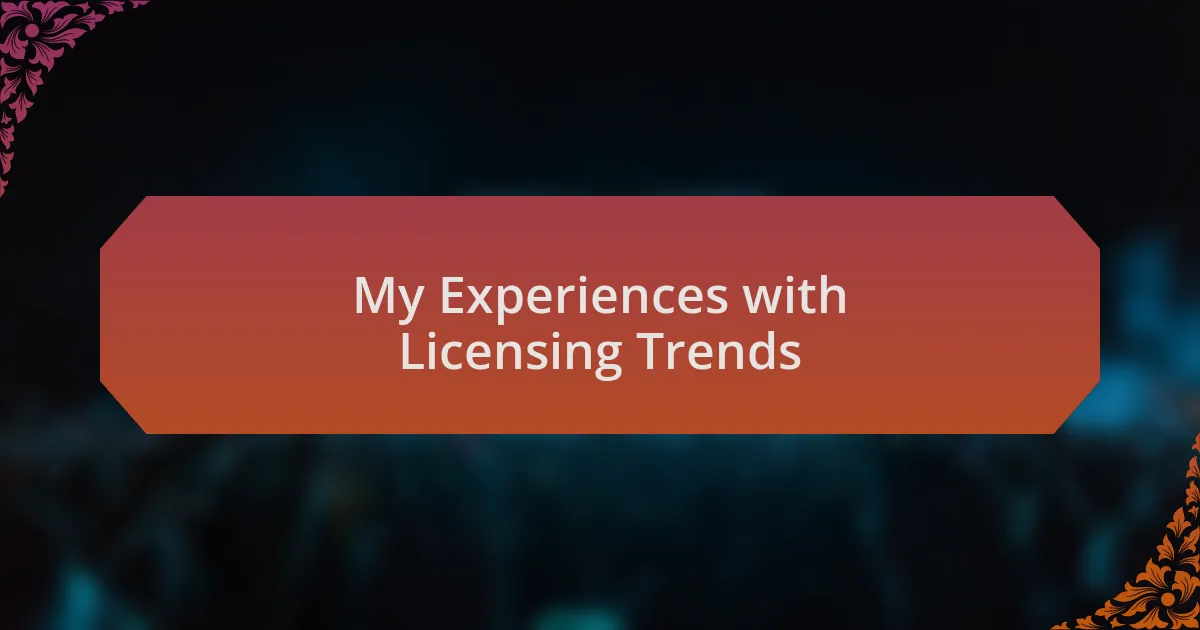
My Experiences with Licensing Trends
My experiences with licensing trends have taught me that understanding the nuances can be a game-changer for independent labels. During a recent project, I dove deep into the world of sync licensing—where music gets placed in TV shows or commercials. I was amazed at how a well-timed placement can breathe new life into an artist’s career. But I also felt the weight of realization: without the right knowledge and connections, many talented artists may never get that opportunity. Is it fair that success often hinges on access to information?
I distinctly remember attending a panel at a local music conference where licensing professionals discussed the evolving landscape. They emphasized the importance of being proactive and knowledgeable about rights management. It struck me how integral these discussions are for independent labels. I left the session feeling inspired, but also overwhelmed—how do you keep pace in a world that is constantly changing?
As I’ve navigated licensing agreements in my own work, I’ve realized that negotiation skills can’t be understated. There was a moment when I was thick in negotiations for a track that I believed in passionately. I learned how much of being successful in this space is about standing firm yet flexible. It’s a balancing act, where knowing your worth and understanding industry standards converges. How do you advocate for your art while navigating the complexities of the market?
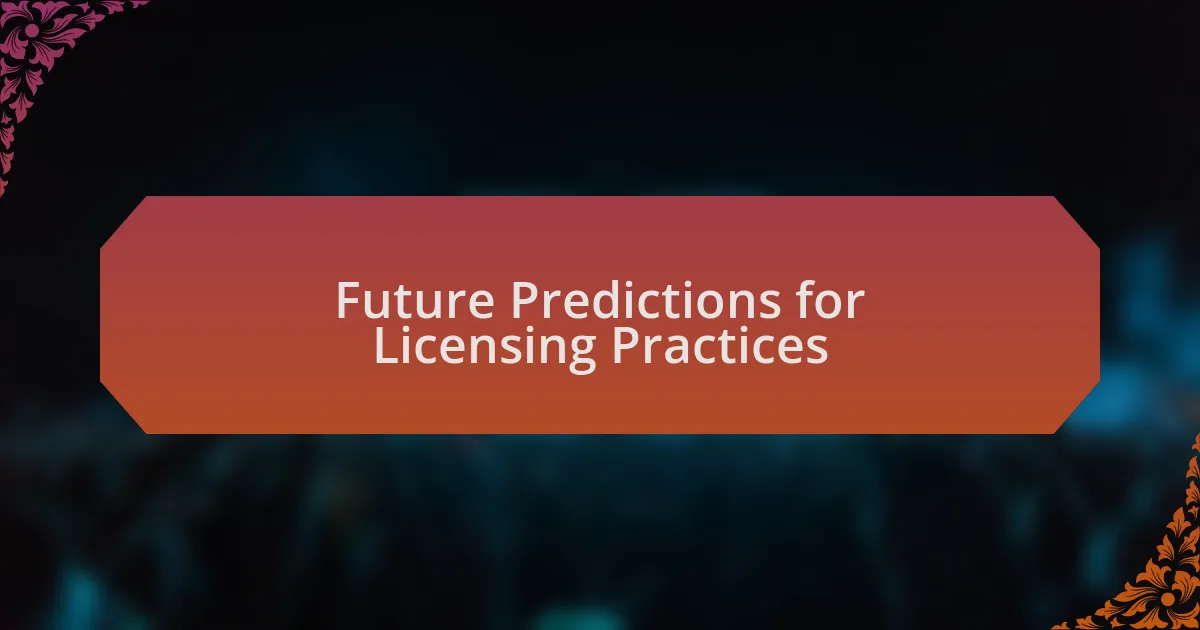
Future Predictions for Licensing Practices
As I consider the future of licensing practices, I can’t help but feel that technology will play a pivotal role. With the rise of blockchain and smart contracts, the way rights are tracked and managed could become more transparent and efficient. I often wonder, how many artists will finally receive fair compensation for their work when these systems are fully in place?
Looking ahead, I foresee more indie labels pivoting towards strategic collaborations with digital platforms. These partnerships could facilitate broader access to licensing opportunities and enhance visibility. I recall a time when I partnered with a small streaming service; the exposure we received was a turning point. Did that experience set the stage for future collaborations? I believe it did.
I also think the conversation around artist rights will intensify in the coming years. As listeners become more aware of the importance of fair pay for musicians, I suspect there will be increased demand for ethical licensing practices. Reflecting on my own experiences, I can’t help but ask: how can we reshape the narrative around music consumption to empower the creators behind the sound?